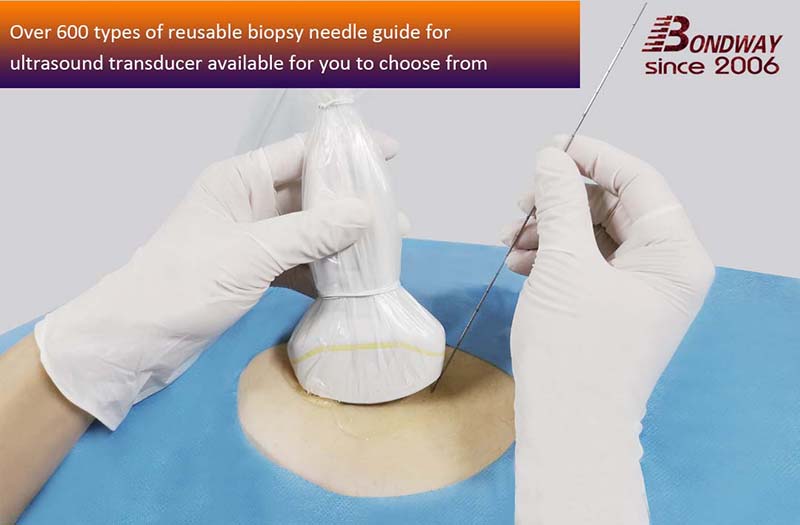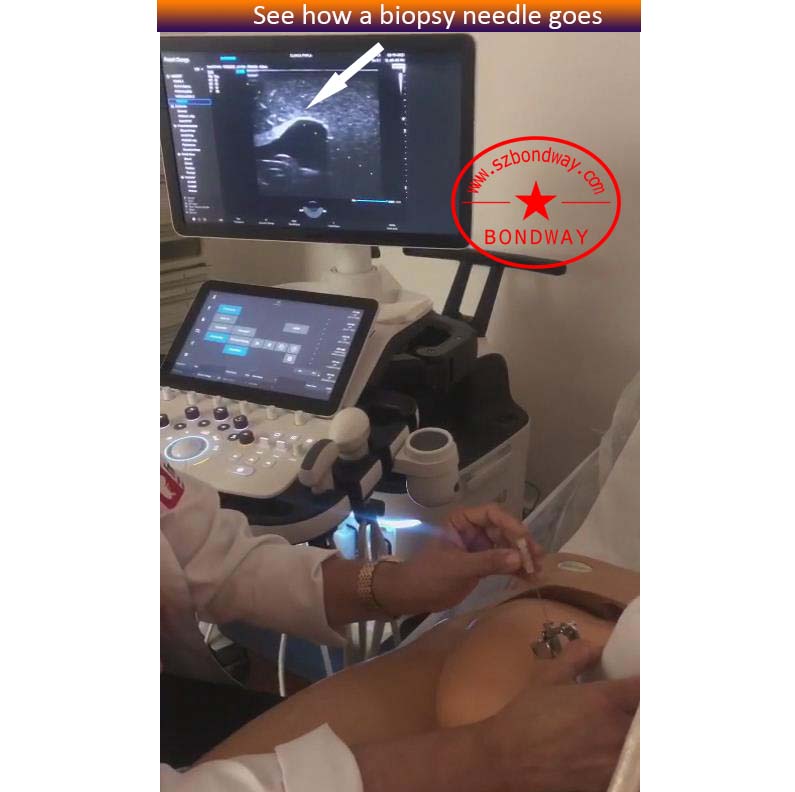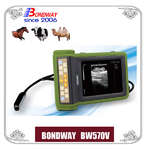Ultrasound intervention “gives an eye” to puncture biopsy, biopsy needle guide
Speaking of puncture biopsy, many people have no idea what it is, and even have an inexplicable fear that puncture biopsy will be very painful. However, with the continuous improvement of medical level, medical practioners have actually been able to minimize the harm of patients through continuous research and exploration, the application of ultrasound interventional therapy to biopsy puncture examination, Now let's look at ultrasound-guided biopsy techniques..jpg)
What an ultrasound guided biopsy can offer to a patient?
Before explaining the biopsy puncture, I would like to share with you a case in which an 80-year-old female patient underwent internal fixation of splintered fracture. The operation was very successful and the wound healing of the patient was also very good. The postoperative imaging examination also showed that the operation was very successful, but the patient had repeated symptoms of high fever after the operation, with a highest temperature reaching 39 Celsius degrees. Then the patient was examined by abdominal color ultrasound. The results showed that the patient was cholecystitis combined with gallbladder abscess. After considering the patient's age and physical condition, the doctor felt that the patient could not be operated on again, so it was decided to perform puncture catheter drainage in the abdominal abscess under ultrasound guidance. After the follow-up of the patient, the patient's body temperature has returned to normal, and the clinical symptoms have been significantly relieved.

Then what is puncture biopsy? What are the advantages of biopsy under ultrasound intervention?
- Biopsy puncture: Biopsy refers to the process of obtaining diseased tissue or cells from human tissue, including puncture biopsy, fine needle aspiration, surgical resection and endoscopic biopsy, etc. However, surgical resection requires a relatively large incision and the patient's blood leakage is also relatively large, while puncture biopsy has several advantages such as less trauma to the patient, high accuracy and high success rate. It is the most commonly used method in clinical practice.
- Ultrasound-guided needle biopsy: Needle biopsy can only be successfully completed under the guidance of imaging means, and the most commonly used guidance methods are CT and ultrasound. Ultrasound intervention is a very important branch of modern ultrasound medicine, and ultrasound guided biopsy has become a mature and widely used examination means in clinical practice. It is guided in real time by ultrasonic images, and minimally invasive operations such as transcutaneous biopsy, drainage, treatment and obtaining of pathological specimens are achieved by puncture needles, catheters and guide wires. Ultrasonic intervention can clearly show the shape, position and size of the lesions, and can clearly show the good anatomical relationship between the lesions and peripheral blood vessels and nerves. It can accurately determine the location, depth and Angle of the injection needle, avoid damage to nerves and blood vessels, and improve the diagnostic accuracy and safety of living biopsy to the greatest extent, which is why this artical says that ultrasonic intervention can make living tissue biopsy "grow eyes". Ultrasound intervention can be widely used in the biopsy of superficial masses of the whole body and diseased organs of the abdomen, including liver, kidney, spleen, pancreas, thyroid, breast, lymph nodes and other tissues.
- Minimally invasive operations The main feature of ultrasonic intervention is to complete various minimally invasive operations under the real-time ultrasonic monitoring and guidance, which can avoid some surgical operations. Its advantages include the following:
- Safety, as ultrasound guided biopsy puncture is performed under real-time monitoring, it can avoid possible damage to the surrounding organs by BLIND puncture, resulting in postoperative complications for patients.
- Short treatment, many patients who have experienced ultrasound interventional therapy know that the operation time is very short, and patients do not feel painful during the treatment.
- Small side-effects, drugs only needs to be used locally during an ultrasound interventional therapy, the side effects on patients will not be very large.
- Minimally invasive, the biggest benefit of ultrasound intervention is minimally invasive, which can exempt patients from the pain of surgery, the trauma is small, the recovery is fast, the hospital stay will be greatly shortened, and the cost that patients have to bear will be reduced.

Over 600 types of Reusable biopsy needle guide Bondway have developed to meet the various needs of interventional surgery in the ultrasound dept. Standardize the operation of ultrasonic interventional surgery, avoid cross infection.
 English
English
 中文
中文 Français
Français
 Español
Español Pусский
Pусский





副本.png?imageView2/2/w/200/h/150/q/60)


